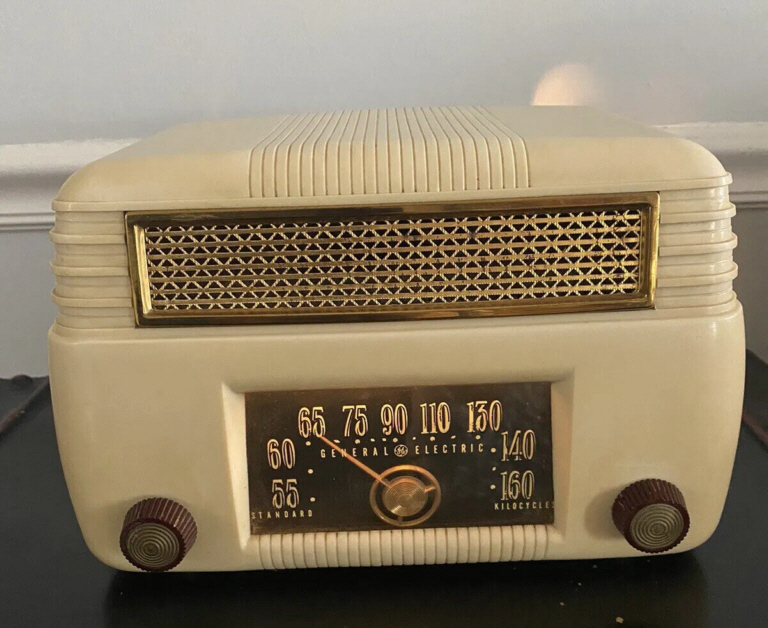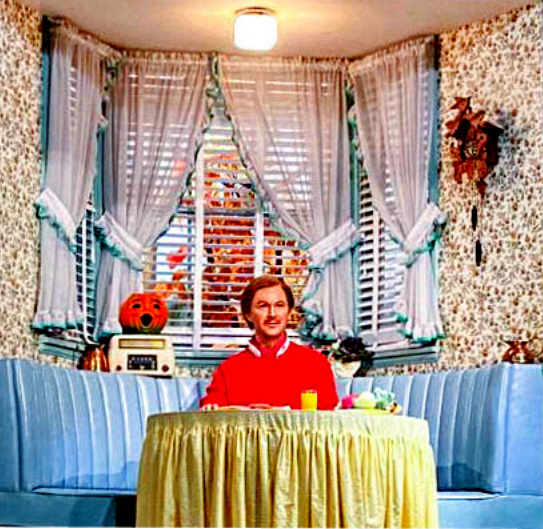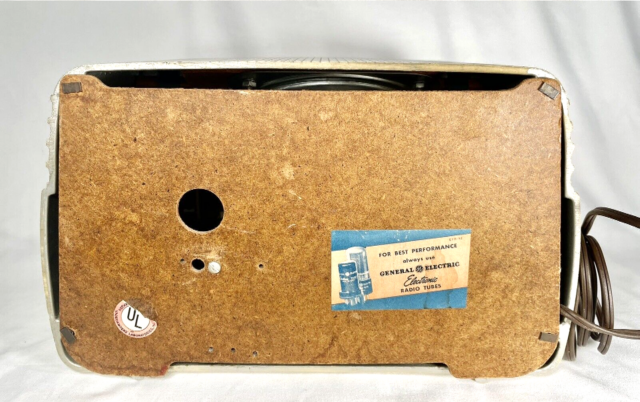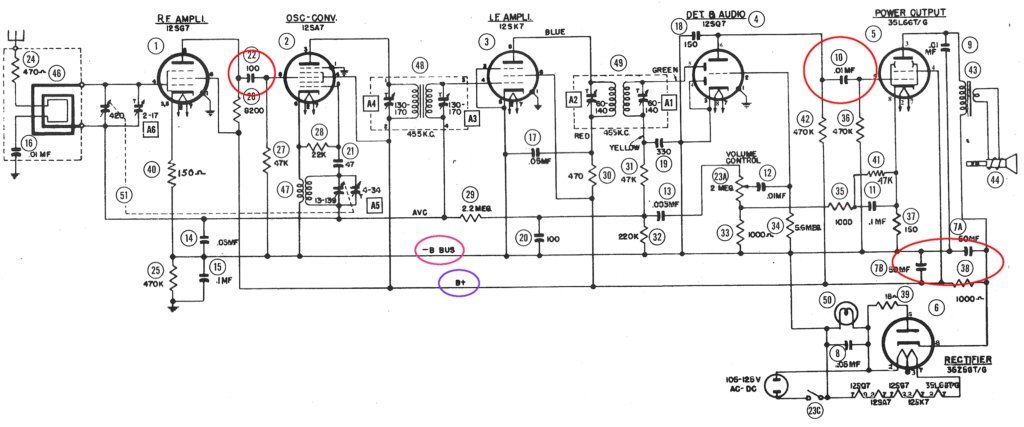General Electric Model 201
Ivory plastic (Plascom)
1946 - 1948

Here it is as found...more later. Seems to be in good physical shape.
This is the same table radio model found on the 3rd stage of the Walt DisneyWorld Carousel of Progress.
It's not really white, the color is ivory,

Shown here, under the pumpkin !
Been looking at this radio for years, finally occurred to me to look for on out in the world (excuse the pun)
I had a epiphany, it must be a GE, since they were the sponsor.
The result is seen above.
I will be restoring it once it arrives..... stay tuned for more.
The radio has arrived.
First some information.
This table radio was manufactured as mentioned above right after world war II
Measurements (WHD)
10.5 x 7 x 7 inch
· . It is a 6 tube radio for 540 to 1600 kHz. (AM band only)
It has a built-in loop antenna, and provision to connect and external antenna.
Here is a photo of the back cabinet as received.

The screw to the left center is for an external antenna. The back is held on by the use of 4 press in pins.
They were very tight to pull out to open the back. Of special note is the label promoting GE replacement tubes
The seller had said it just hums, which is true. It appears the DC power supply is unfiltered.
This is a common issue with multi-section capacitor as is used in the radio design.
The main filter is a 2 section 50mf cap at 150
Below is a marked schematic showing critical areas and marking B+ and B- lines.
On the right I circled the section capacitor filters.

In the case of this radio only the power supply filters are bad. I may change others as well.
In retail servicing we never changed parts that weren't defective.
In the current world people generally change all caps.
A quick test of coupling caps is to measure the dc voltage on both sides for leakage.
Of course resistors can change values as well, so a quick check of tube bias is a good idea.
This radio checked ok with the exception of the supply filters.
Given the way the mull-section cap was installed I decided not to remove it.
With new individual caps in place the radio was powered through a B&K isolated fused supply to monitor current and test it.
With a little IF tuning etc., the radio came to life.
I have an idea how to use this---stay tuned